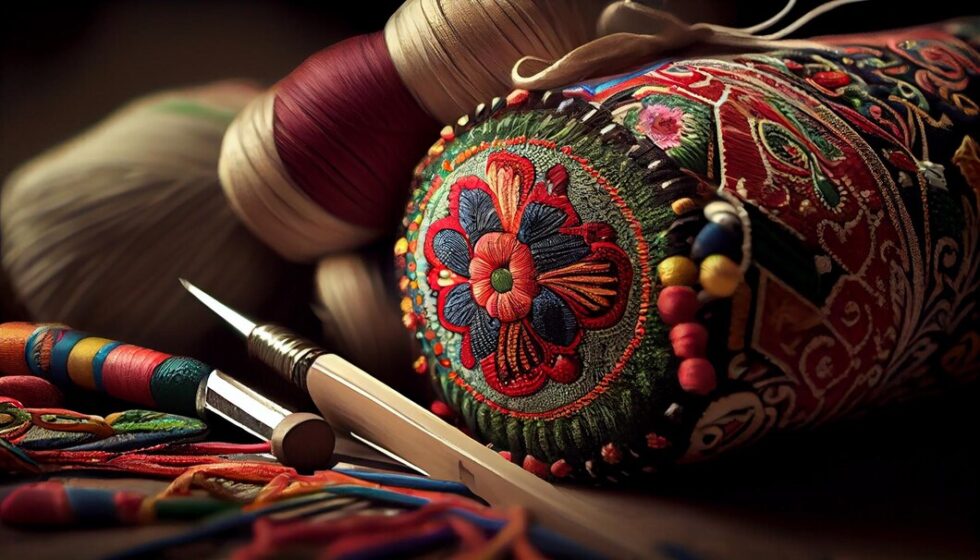
Chagaras, often referred to as the “embroidery of the soul,” is a traditional craft deeply embedded in the cultural fabric of numerous societies. This intricate art form is not merely a decorative practice but a rich tapestry of history, identity, and expression. For centuries, artisans have used Chagaras to convey stories, beliefs, and emotions, making it a vital element in preserving and celebrating cultural heritage. This article explores the origins, techniques, cultural significance, and contemporary relevance of Chagaras, highlighting its role as a living tradition that continues to evolve.
Origins and Historical Background
Ancient Beginnings
The origins of Chagaras can be traced back to ancient civilizations, where embroidery served as a medium for storytelling and a marker of social status. Archaeological findings suggest that early forms of this craft existed in various regions, including the Middle East, Asia, and the Americas. These early Chagaras pieces often depicted scenes from daily life, mythological tales, and religious motifs, offering a glimpse into the spiritual and cultural life of the people.
Evolution Over Time
As societies evolved, so did the techniques and styles of Chagaras. Different regions developed their unique styles, influenced by local materials, climate, and cultural exchange. For instance, the delicate silk embroideries of China, known as Suzhou embroidery, contrast sharply with the vibrant, geometric patterns of Andean textiles in South America. The spread of trade and exploration during the medieval and early modern periods further enriched Chagaras, introducing new materials and motifs that blended with traditional elements.
Techniques and Materials
Traditional Techniques
Chagaras is a highly skilled craft that involves a variety of techniques, each contributing to the distinctiveness of the finished product. Some of the most common techniques include:
Appliqué: Involves sewing pieces of fabric onto a larger piece to create patterns or images.
Cross-Stitch: A popular form of counted-thread embroidery where X-shaped stitches form a picture or design.
Embossed Embroidery: Adds a three-dimensional effect by padding the fabric before stitching.
Freehand Embroidery: The artisan stitches directly onto the fabric without a pre-drawn design, allowing for spontaneous creativity.
Materials Used
The choice of materials is crucial in Chagaras, as it affects the texture, durability, and appearance of the final piece. Traditionally, artisans use natural fibers like cotton, wool, silk, and linen. The threads, often dyed with natural pigments, add color and vibrancy to the designs. In some cultures, metallic threads, beads, and sequins are incorporated to enhance the visual appeal and significance of the embroidery.
Cultural Significance
Symbolism and Meaning
Chagaras is not merely a decorative art; it is laden with symbolism and meaning. The patterns and motifs often have cultural, spiritual, or personal significance. For example, floral patterns may symbolize growth and fertility, while geometric shapes can represent harmony and order. In some cultures, specific colors carry particular meanings—red for prosperity, blue for protection, and white for purity.
Rituals and Ceremonies
In many societies, Chagaras plays a vital role in rituals and ceremonies. It is common for brides to wear intricately embroidered garments on their wedding day, symbolizing purity and prosperity. Similarly, embroidered cloths are often used in religious ceremonies, as altar cloths, or as offerings. These pieces are not only beautiful but also serve as a medium for blessings and prayers.
Contemporary Relevance
Chagaras in Modern Fashion
In recent years, there has been a resurgence of interest in traditional crafts, including Chagaras, in the fashion industry. Designers are increasingly incorporating traditional embroidery techniques into contemporary clothing, accessories, and home decor. This fusion of old and new has not only brought Chagaras to a broader audience but has also revitalized the craft, providing economic opportunities for artisans.
Preservation and Revival Efforts
Despite its rich heritage, Chagaras faces challenges in the modern world, including the decline of traditional skills and the availability of cheap, machine-made alternatives. However, efforts are being made to preserve and revive this ancient craft. Cultural organizations, NGOs, and governments are working to support artisans, provide training, and promote fair trade practices. Additionally, digital platforms and social media have become powerful tools for sharing and promoting Chagaras, connecting artisans with global markets.
Case Studies: Regional Variations
Chagaras in Central Asia
In Central Asia, particularly in Uzbekistan and Kazakhstan, Chagaras is known for its vibrant, bold patterns. The region’s rich history of Silk Road trade has left a lasting impact on its embroidery, evident in the intricate floral and geometric designs. Traditionally, these embroideries adorn household items like cushions, bedspreads, and wall hangings, often given as gifts during important life events.
Chagaras in India
India’s diverse cultural landscape is reflected in its wide range of embroidery styles, collectively known as Chagaras. From the delicate mirror work of Gujarat’s Kutch region to the intricate Chikankari of Lucknow, each style has its unique charm. Indian Chagaras is not only a symbol of cultural identity but also a significant source of income for many artisans, particularly women in rural areas.
Chagaras in Latin America
In Latin America, particularly in Mexico and Peru, Chagaras has deep cultural roots. The vibrant, colorful embroideries often feature motifs inspired by nature, indigenous mythology, and daily life. These pieces are used in traditional clothing, religious ceremonies, and festivals. The recent interest in Mexican Otomi embroidery and Peruvian Ayacucho textiles in global fashion highlights the enduring appeal of Latin American Chagaras.
The Future of Chagaras
Challenges and Opportunities
The future of Chagaras is shaped by both challenges and opportunities. On the one hand, globalization and the rise of fast fashion threaten the survival of traditional crafts. On the other hand, there is a growing movement towards sustainable and ethical fashion, which values handmade, artisanal products. This trend presents an opportunity for Chagaras to gain recognition and appreciation as a high-quality, culturally rich craft.
Innovations and Adaptations
As with any traditional craft, Chagaras must evolve to stay relevant. Innovations in design, the use of new materials, and the incorporation of modern technologies are ways in which this craft can adapt. For instance, some artisans are experimenting with digital embroidery machines, which, while not traditional, allow for greater precision and efficiency. Others are blending traditional techniques with contemporary designs, appealing to a new generation of consumers.
Conclusion
Chagaras, the “embroidery of the soul,” is a testament to the richness of human creativity and cultural expression. As a craft that transcends borders and generations, it holds a special place in the hearts of many. While it faces challenges in the modern world, the resilience and adaptability of Chagaras artisans offer hope for its continued relevance. By supporting and celebrating this traditional craft, we not only preserve a valuable cultural heritage but also enrich our own lives with its beauty and meaning.









